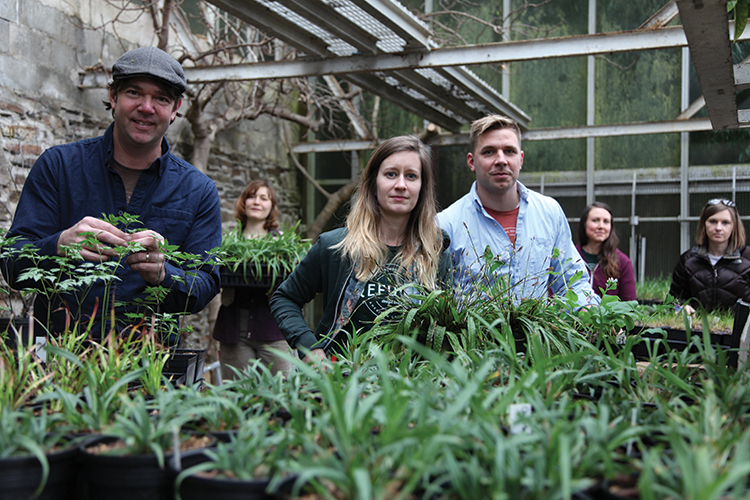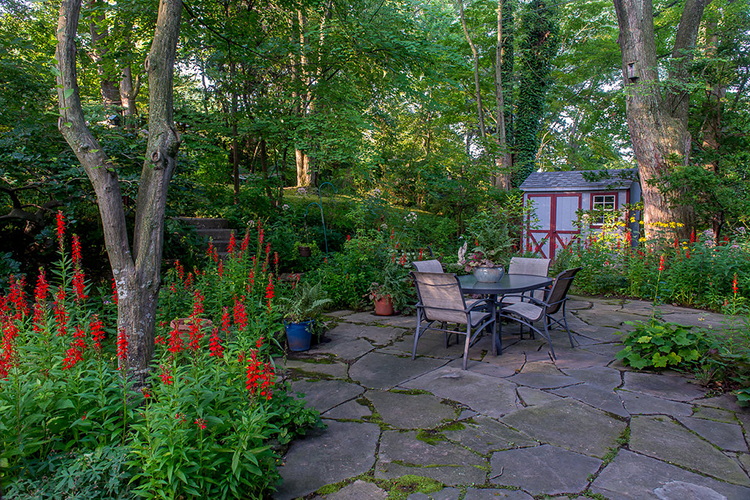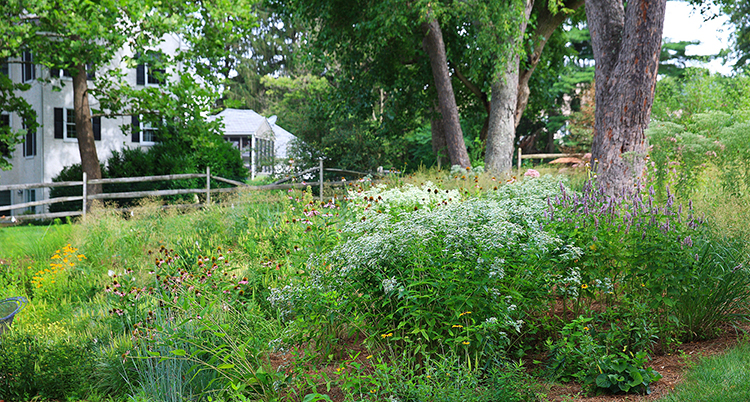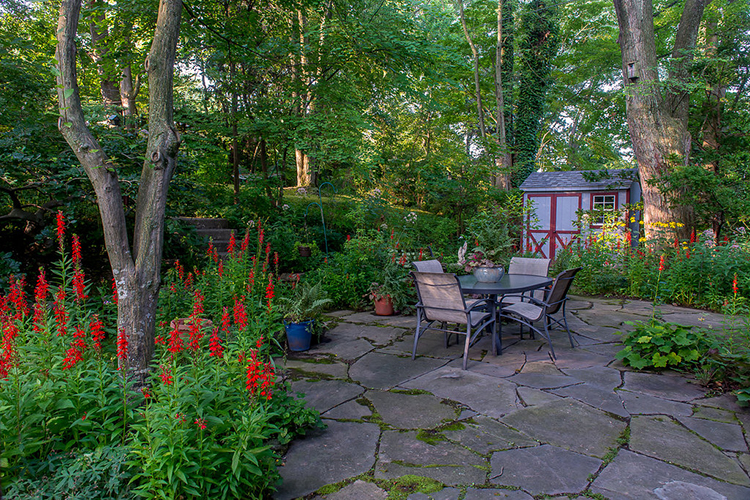The life cycle of standard yard maintenance may sound familiar: In March, the winter annuals are ripped out; next up is a huge round of mulching; then the summer annuals are planted; more mulching; constant weeding, fertilizing, trimming and watering; and then as fall and winter approach it all starts to die, and the yard lays dormant until the next March when it starts all over again. This labor and resource-intensive method of beautifying landscapes never sat quite right with Jeff Lorenz, the founder of Refugia, a sustainable landscape design, building and management firm based in Narberth.
“You realize a lot of it feels really ridiculous and pointless, coddling plants that really don’t—I don’t want to say don’t belong… but, you’re putting so much energy into them when there are other options that don’t need so much energy and intensity,” he says. “Our whole goal is for landscapes to start to be functional on their own and manage themselves with a lot less human input.”
How do Lorenz and his team of designers do this? Mainly by focusing on native plants that grow, thrive and attract the wildlife in the geographical conditions of our region. They call this “activating the landscape.” Instead of trying to resist and control the forces of nature, they create spaces around their clients’ homes that mirror the plant communities one might see on a hike through a local forest.
Lorenz founded Refugia in 2015 with a small team of like-minded people with various backgrounds in landscaping. Many designers on the current staff, which now numbers seven, were classmates in Temple University’s master of architecture program, which has a focus on ecological restoration.
Brint Nicolai, a designer at Refugia, says that, similar to Lorenz, he became interested in native design after spending a few summers working for a traditional landscaping company, which made him skeptical of the seasonal maintenance and planting practices. Planting things just to rip them up again felt unnatural and completely disconnected from the actual environment around them.
“Native design is more practical. It has a sense of place and it improves from year to year, which is really cool,” he says. “You can have plants that have grown together for a really long time… We’re trying to take those natural plant communities and stylize them a little bit so it works in a smaller setting.”
For many of their projects, the Refugia team will test the soil on the property, assess how water moves across and is absorbed by different areas, and see what mature trees and plants are already growing well on the site. They look at the property and envision it as different zones, noting sunny, upland sites or shadier, woodland areas. They compile simple plant lists, many of which are grown in their own greenhouse in Bala Cynwyd. Their goal is to give the property flowering or textural interest throughout the seasons, not just for aesthetics, but also to attract and support small wildlife.
“Instead of trying to completely change the landscape, we work with it,” Lorenz says. “It’s a fun challenge to balance with the client’s needs, too.”
The best part, Lorenz says, is that when you activate the landscape, you can see immediate changes.
“There’s a vibrancy and sensory detail that happens immediately, literally: There’s the rustling of leaves, bees, hummingbirds using the space, and you can suddenly hear the breeze on your property,” he explains. “That’s just this extra magical quality to adding functional, useful plants into the landscape.”







